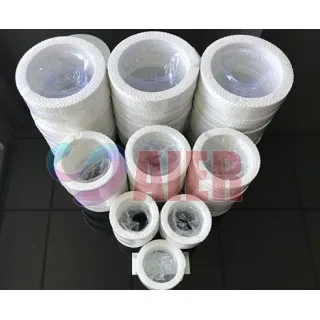Nov . 11, 2024 05:53 Back to list
Wetted Component Considerations for Slurry Pump Design and Manufacturing
Understanding Wetted Parts in Slurry Pump Manufacturing
In the world of slurry pump manufacturing, one of the critical components to consider is the wetted parts. These are the parts of the pump that come into contact with the slurry, which often consists of a mix of water and solid particles. The performance, durability, and efficiency of a slurry pump are significantly influenced by the materials and design of its wetted parts. Therefore, understanding these components and their importance is essential for manufacturers, engineers, and end-users alike.
The Importance of Wetted Parts
Wetted parts are critical to the operation of a slurry pump as they directly interact with the abrasive and corrosive nature of the slurry. These parts must be carefully designed to withstand not only the physical abrasiveness of solid particles but also any chemical agents that might be present in the slurry. Whether it’s minerals, coal, or waste material, the harsh conditions faceted by these substances call for specialized materials and constructions.
The primary wetted parts in a slurry pump include the impeller, casing, throat bush, and various seals. Each of these components plays a pivotal role in ensuring the pump operates efficiently and has a long service life.
Key Materials Used for Wetted Parts
When it comes to selecting materials for wetted parts, manufacturers often have to balance between wear resistance, corrosion resistance, and cost-effectiveness. Common materials used include
1. Cast Iron This is a traditional material for slurry pumps. It is cost-effective and offers reasonable wear resistance but may not hold up well under corrosive conditions.
2. High Chrome Alloys Used often for impellers and casings, high chrome alloys provide excellent wear resistance against abrasive materials. They are ideal for pumping tough slurries but can be more expensive than cast iron options.
3. Rubber Linings Rubber is sometimes used for lining the inside of pump casings and components. This provides excellent resistance to corrosive substances and reduces wear on the underlying metal. However, rubber may not stand up to high-temperature slurries or abrasive solids.
wetted parts for slurry pump manufacturers

4. Polyurethane This material combines the benefits of rubber and metals, providing excellent wear resistance while maintaining flexibility. It is often chosen for components that encounter both abrasives and corrosive materials.
5. Stainless Steel For applications requiring high degrees of corrosion resistance, stainless steel or its alloys may be employed. While it may not offer the same level of wear resistance as high chrome alloys, it is better suited for environments with corrosive chemicals.
Design Considerations
Designing wetted parts involves more than just choosing the right materials; it also requires an understanding of the slurry characteristics, pumping conditions, and operational requirements. Some key design considerations include
1. Hydraulic Efficiency The shape and sizing of wetted parts significantly impact the hydraulic efficiency of the pump. Engineers must design components to minimize turbulence and maximize flow efficiency.
2. Manufacturing Techniques The manufacturing process, whether casting, machining, or molding, can influence the quality and performance of wetted parts. Each process has its pros and cons regarding precision, cost, and material properties.
3. API and Industry Standards Compliance with industry standards is essential, especially for pumps used in critical applications such as mining and wastewater management. Manufacturers must ensure their wetted parts meet applicable guidelines.
4. Wear Monitoring Implementing monitoring technologies can help operators understand wear patterns and anticipate failures, enhancing the lifespan of wetted parts. Regular maintenance schedules should include inspections of wetted components.
Conclusion
Wetted parts are arguably the most vital components of slurry pumps, directly affecting their performance and longevity. The choice of materials, design considerations, and adherence to industry standards play a crucial role in ensuring a slurry pump can efficiently handle the demanding environment it operates in. As industries continue to evolve, manufacturers must stay informed about new materials and technologies to enhance the performance and durability of their slurry pumps. Understanding the intricacies of wetted parts will allow for better decisions in pump design, resulting in optimized systems and reduced operational costs over time.
-
Top Submersible Pump Companies High Quality Manufacturers & Suppliers in China
NewsJul.08,2025
-
High Quality Seal for 5 Inch Dredge Pump Reliable China Manufacturer & Supplier
NewsJul.08,2025
-
High-Efficiency Slurry Sand Pump from Leading China Manufacturer – Durable & Reliable Solutions
NewsJul.07,2025
-
High-Quality Slurry Pump Made in China Durable Steel Mill Slurry Pump & Parts
NewsJul.07,2025
-
High Quality Excavator Dredge Pump Manufacturer & Suppliers from China – Reliable, Durable, Efficient Solutions
NewsJul.07,2025
-
Wholesale Slurry Pump Closed Impeller Supplier High Efficiency China Slurry Pump Closed Impeller
NewsJul.06,2025
